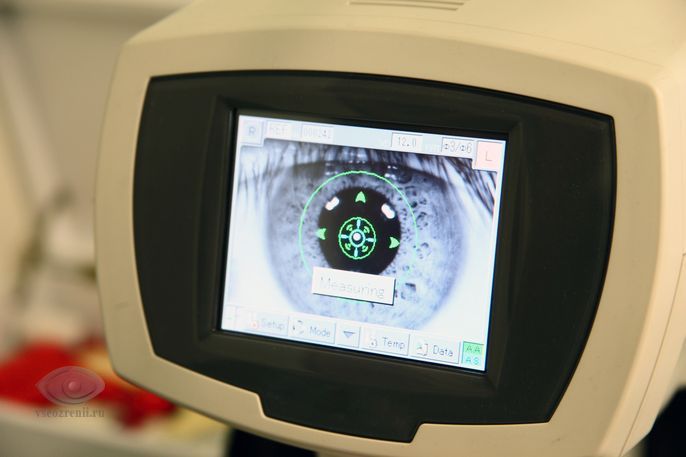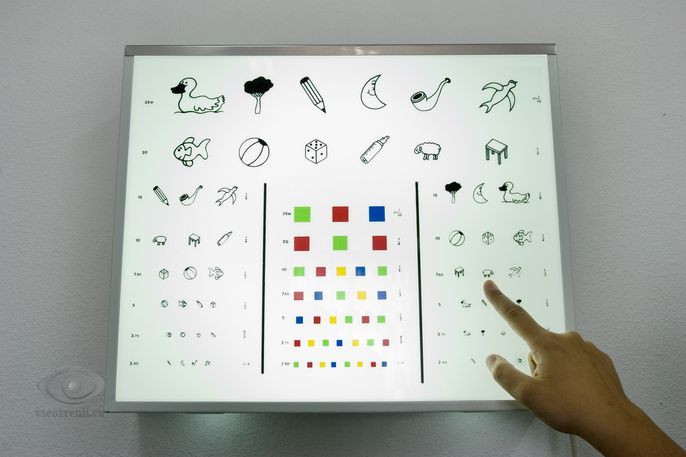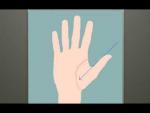Selection of glasses
Before ordering glasses, especially if you are experiencing vision problems for the first time, you should consult an ophthalmologist to rule out a number of possible diseases. If you are a “bespectacled person” with experience or, after reaching a certain age, you begin to have difficulty seeing up close and move your favorite newspaper away from your eyes, then to select glasses, you can go to any optical salon where there is either an ophthalmologist or an optometrist who is a specialist in selecting glasses.

Visual acuity test
The selection of glasses begins with checking visual acuity. Most modern optical shops, medical centers and clinics have a special device - an autorefractometer, with the help of which a specialist receives preliminary approximate information about your vision. But ordering glasses only based on the results of a computer examination without an additional vision test is unacceptable.
It is unacceptable to order glasses only based on the results of a computer examination!
Visual acuity is checked using a table or using a sign projector from a distance of 5m. Each eye is tested separately, always starting with the right one. The patient reads the letters of each line from top to bottom; The last line read is visual acuity without correction. For example, the third line is visual acuity 0.3, the fifth line is 0.5, etc.
Then, using a trial frame, positive (convergent) or negative (divergent) lenses are applied to the eye, depending on those identified by the autorefractometer data. If autorefractometry has not been performed, then, by attaching a weak plus and minus lens, they find out in which case the vision has improved, and subsequently take lenses of this sign.

Lenses are selected sequentially, with a gradual increase in their refractive power until the maximum visual acuity for a given eye is achieved. For myopia, a lens with minimal refractive power is prescribed, which gives high visual acuity. In case of farsightedness, on the contrary, a lens with the highest value is selected, at which the best visual acuity is maintained.
Each eye is corrected to 0.7-0.8, sometimes to 0.9-1.0 (for example, for driving), then binocular visual acuity is checked, i.e. both eyes. In this case, visual acuity of both eyes should be 0.9-1.0.
Note that if the vision of the right and left eyes is different, then the maximum permissible difference in the prescribed diopters is no more than 2-3 D, depending on the patient’s individual tolerance. Then you need to give the subject the opportunity to wear the trial frame for several minutes, read, and walk around to check the tolerance of the corrective lenses.
Correction of astigmatism
The most difficult thing is choosing a correction for astigmatism, since you need cylindrical lenses, which require getting used to, sometimes quite a long time. For high degrees of astigmatism, glasses that are weaker than required are first prescribed, and after a couple of months the correction is increased.
Instead of a trial frame and a set of glasses, a special attachment to an ophthalmological diagnostic complex - a phoropter - can be used.

When selecting reading glasses, a special table is used to test near vision. The selection is carried out according to the same rules as for distance - each eye is checked separately, then binocularly. They focus on texts 4-6 of the table, depending on the wishes and needs of the patient.
If bifocal or progressive glasses are selected, both distance and near vision are tested. It is necessary to select such a correction so that the difference between the optical power of the distance and near zones does not exceed 2-3 D, and, at the same time, there is sufficient visual acuity at the selected distances.

Interpupillary distance measurement
After selecting the correction, the interpupillary distance is measured.
Typically, the distance between the centers of the pupils is measured either using a regular ruler or using a special device - a pupillometer.
Naturally, there is a certain technique for measuring interpupillary distance. As a rule, the distance for glasses at distance is 2 mm greater than for near.

An incorrectly measured distance results in incorrect alignment of the lenses in the frame, which in turn can cause poor health during visual strain.
Glasses prescription
Then the ophthalmologist or optometrist writes a prescription, which indicates: the patient’s data, the required optical power of spherical and, if necessary, cylindrical lenses (indicating the axes of the cylinder), interpupillary distance, the purpose of prescribing glasses - for distance, for reading, for constant wear, etc. d.
Save your glasses prescription to compare results over time.
You should not throw away existing prescriptions written by your ophthalmologist, as they can be used to determine, if necessary, how your vision has changed over time. It is important that the selection of glasses is carried out by a qualified specialist. Incorrectly chosen glasses can cause constant eye fatigue, cause headaches, fatigue, impaired performance and contribute to vision deterioration.









 Nail care
Nail care Prom hairstyle for long hair
Prom hairstyle for long hair 18 wonderful New Year cards that even a child can make
18 wonderful New Year cards that even a child can make The best set of exercises for morning exercises
The best set of exercises for morning exercises